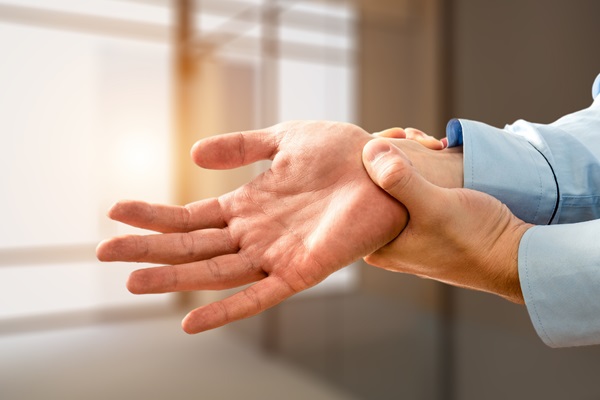Preventing Tendinitis: Tips for Healthy Tendons

Tendinitis can interfere with sports, hobbies, and everyday life. Although a physical therapist can treat and manage this condition, prevention is always the most effective treatment. Following a few tips and tricks for healthy tendons can go a long way toward preventing tendinitis.
What is tendinitis?
Tendons are the thick chords of connective tissue that attach bone to muscle. When they become inflamed, it is considered tendinitis. This inflammation typically occurs where the tendon connects to the bone, such as how golfer’s elbow (medial epicondylitis) affects where the tendons in the forearm connect to the inner elbow joint.
According to the Mayo Clinic, other common types of tendinitis include:
- Tennis elbow. Also known as lateral epicondylitis, which affects the tendons on the outside of the elbow.
- Achilles tendinitis. Also known as tendinitis of the heel because it affects the Achilles tendon, which connects the calf muscles to the heel bone.
- Jumper’s knee. Patellar tendinitis, also known as the patella, affects the tendon connecting the shinbone and kneecap.
With any type of tendinitis, the patient will likely experience tenderness, swelling, and a dull ache in the affected limb or around the affected joint. This ache is most uncomfortable when moving or using the affected area. For example, tennis elbow will likely hurt the most when lifting or gripping an object. Tendinitis may make the affected area too weak or stiff to use as normal.
How to prevent tendinitis: Tips and tricks
Tendinitis prevention can also help treat tendinitis. Therefore, a physical therapist may recommend the following tips to prevent tendinitis, help manage it, or reduce the risk of recurrence.
Design your workout to be easy on the tendons
Every form of exercise has its risks. Basketball carries the risk of Jumper’s knee, while tennis elbow gets its name from its high prevalence among tennis players. Switching up sports or workout routines can help prevent the overuse of a specific joint and tendon, thereby preventing tendinitis. Cross-training is a great way to achieve this. It can also be as simple as alternating between two different exercises or sports, such as swimming and running or tennis and basketball.
Exercise five times a week
Although certain exercises and sports carry a higher risk of tendinitis, staying active can generally help reduce this risk. For best results, the Centers for Disease Control and Prevention (CDC) recommends exercising for 30 minutes five days a week. Always warm up before and cool down after exercise to prevent injury.
Do not forget to stretch
Consistent stretching has the same effect as consistent exercise. As such, the American College of Sports Medicine recommends doing it two to three times a week. This can be done on rest days to keep the muscles and tendons healthy. However, some approaches to stretching — such as pilates, yoga, and tai chi — are also a form of exercise and can count toward the patient’s weekly exercise goals.
Talk to a physical therapist about tendinitis prevention
Tendinitis is uncomfortable, so it is best to prevent it when possible. If you would like to learn more about preventing tendinitis from returning or happening in the first place, contact Orange County Physical Therapy OCPT. Our team can assist you in improving your tendon health and joint mobility.
Request an appointment here: https://ocptclinic.com or call Orange County Physical Therapy OCPT at (949) 299-0297 for an appointment in our Newport Beach office.
Check out what others are saying about our services on Yelp: Tendinitis in Newport Beach, CA.
Related Posts
Massage therapy is widely known for its therapeutic benefits, particularly when administered by an experienced physical therapist. Physical therapists have a unique understanding of musculoskeletal anatomy and movement and can utilize massage therapy to help patients recover. This approach, also known as physical therapy massage, reduces pain and improves overall physical health.According to the National…
Cycling performance therapy can be an important resource for athletes seeking to improve efficiency, prevent injuries, and recover from physical strain. This specialized approach, provided by a physical therapist, addresses the unique biomechanical demands of cycling while promoting long-term musculoskeletal health. Cycling performance therapy is a targeted program designed to improve a cyclist's endurance, strength, and…
Physiotherapy is a medical term that refers to physical therapy. Many individuals are familiar with physical therapy due to the common need for it among sports players and individuals who may have gotten injured or experienced a chronic illness.There is also a common misconception that physiotherapy is only needed when it comes to rehabilitating a…
Hip pain can be a debilitating condition that affects your daily activities and overall quality of life. Seeking hip pain treatment from a physical therapist when it first appears can prevent further complications and improve your health and well-being. Here are four main benefits of early hip pain treatment.Early hip pain treatment can prevent further…
